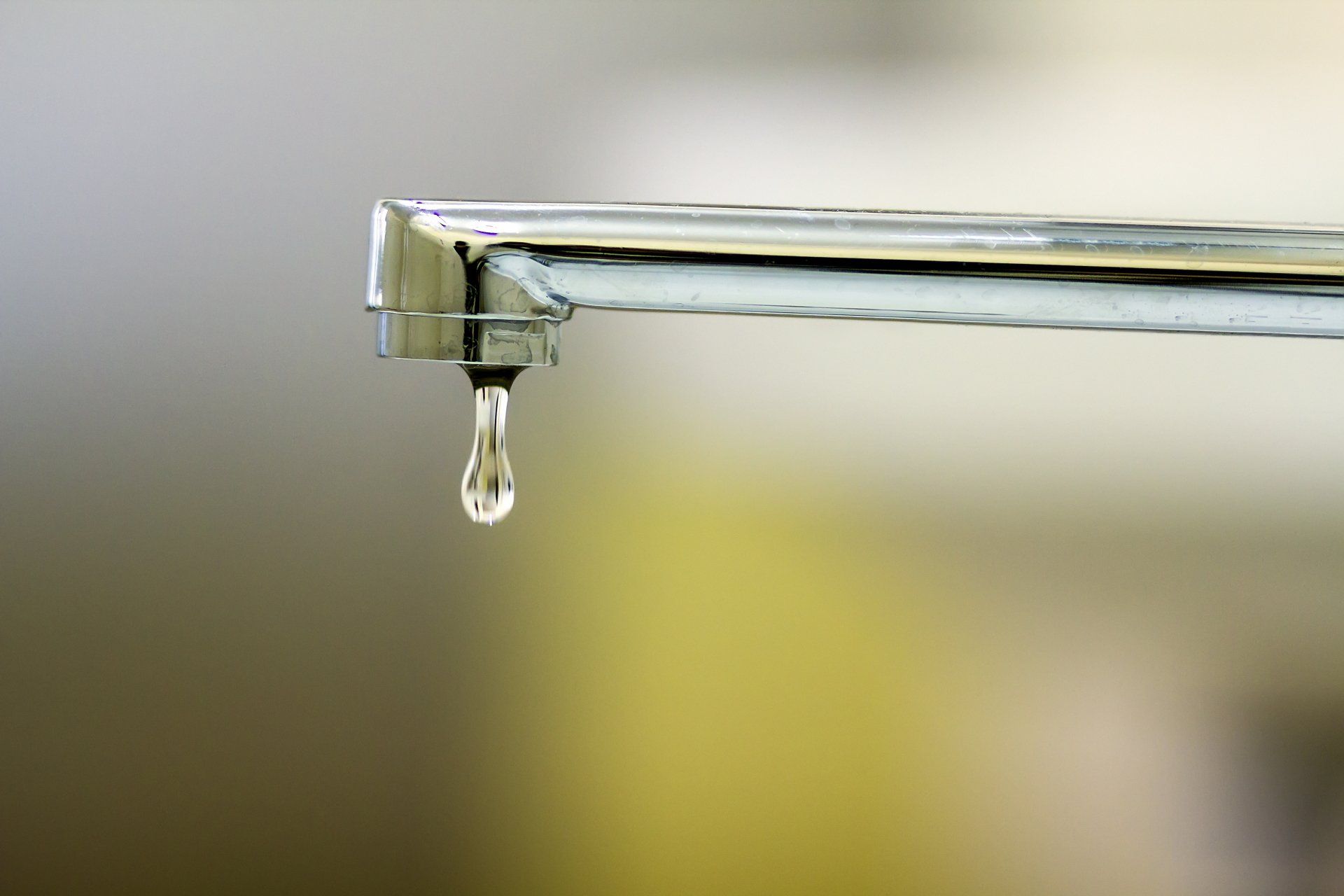WE ARE HIRING
Hard Water
- Cause:
Hard water is created when water passes through rock formations and picks up calcium and magnesium.
- Remedy:
Water hardness is corrected using a water softener/conditioner. The hard water passes through a tank containing resin beads holding "soft" sodium ions. The "hard" calcium and magnesium ions are exchanged for sodium ions thus softening the water. When the beads have trapped all the hardness they are able to hold, the unit is regenerated (recharged) with salt brine to replace the hardness ions with sodium ions. The unit is then ready to soften water again.
Iron Water
- Clear water iron: Water is clear when drawn from the tap - it turns red after standing for a time as the iron mixes with the air and oxidizes
- Red water iron: Water is red when drawn from the tap - the iron has already oxidized in the ground, well, or water system
- Cause:
Iron Water is created when water passes through iron bearing rocks in the earth. It can also be caused, usually temporarily, by water standing in iron pipes.
- Remedy:
Small amounts of clear water iron can be corrected by a water softener. Red water iron and larger amounts of clear water iron can be controlled by running the water through a filter containing an oxygen rich mineral or environment. The iron is then oxidized into solid particles that can be trapped in the filter and washed down the drain.
Acid Water
- Cause:
Acid water is caused by water passing through extremely hard rock such as granite or marble. Water, by its nature, wants to dissolve something and when it passes through materials it can't dissolve, it comes into the home in a "hungry" state and starts eating away everything it touches. The degree of problems experienced will be determined by the pH scale which measures acidity on a scale of 1 to 14. Water registering below 7 is acidic, at 7 is neutral and above 7 is alkaline.
- Remedy:
Slightly acidic conditions can be controlled by running water through a filter tank containing a neutralizing compound. More extreme conditions can be controlled using a chemical feed system that injects a liquid neutralizer into the water. Also, a phosphate feeder can be used to coat all water-bearing surfaces with a film that helps eliminate acidic damage.
Taste and Odor
- Cause:
Tastes and odors are caused by many things including chlorine, chlorine compounds, decaying organic matter, and dissolved gases or minerals. The presence of hydrogen sulfide, which tastes and smells like rotten eggs or sulfur, is caused by decaying vegetation, oil deposits beneath the earth's surface or some types of iron bacteria.
- Remedy:
Common tastes and odors can be treated by a tank filter containing activated carbon. The carbon absorbs the tastes and odors. Minor problems can be treated by a single-faucet filter. Hydrogen sulfide is a different problem requiring a different type of treatment. Low levels can be treated with an iron filter followed by a water softener. High levels require a chemical feed pump followed by a turbidity filter.
Frequently Asked Questions About Water Systems
- Will a water softener add salt to my drinking water?
The answer is no. However, there is a minimal increase in sodium. Salt is essential to regenerate the resin inside the tank, after regeneration the salt water is rinsed out a drain line. The ion exchange process adds a small amount of sodium. The increase of sodium in 1 quart of softened water would be equivalent to the sodium in 1 slice of white bread (approximately). The exact amount of sodium added will vary depending on the hardness of the water.
- Is it true that the discharge of salt water from a water softener is bad for my septic system?
The answer is no, The sodium discharge has been found to bring the bacterial environment necessary for waste breakdown, closer to an optimal range then the lower sodium supplies tested. The conditions are ideal for and favored by the bacteria.
- I have heard that soft water feels different, is this true?
Yes, soft water does feel different. Soft water does not contain the two hardness minerals calcium and magnesium which adheres to your skin, stripping it of its natural oils. It is necessary to make some adjustments after installing a water softener, use 1/2 the normal measurement of soaps and detergents. If soft water is difficult to get used to, hard water can be blended in and gradually reduced.
- Is there a product I can pour down my well to remedy hard, acidic or iron water?
Unfortunately no, there is nothing available to pour in one's well to remedy most common water problems. Almost all minerals must be filtered through a POE (point of entry) system for correction, installed at the waters point of entry to the home.








